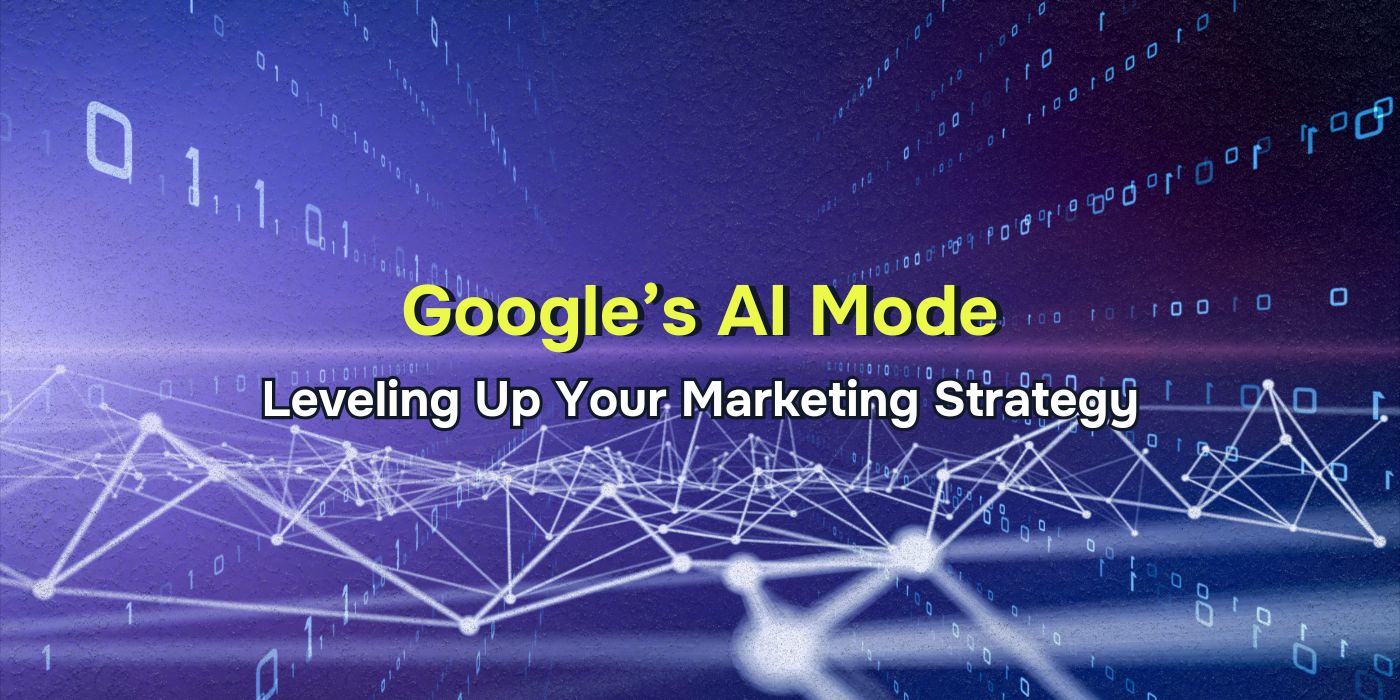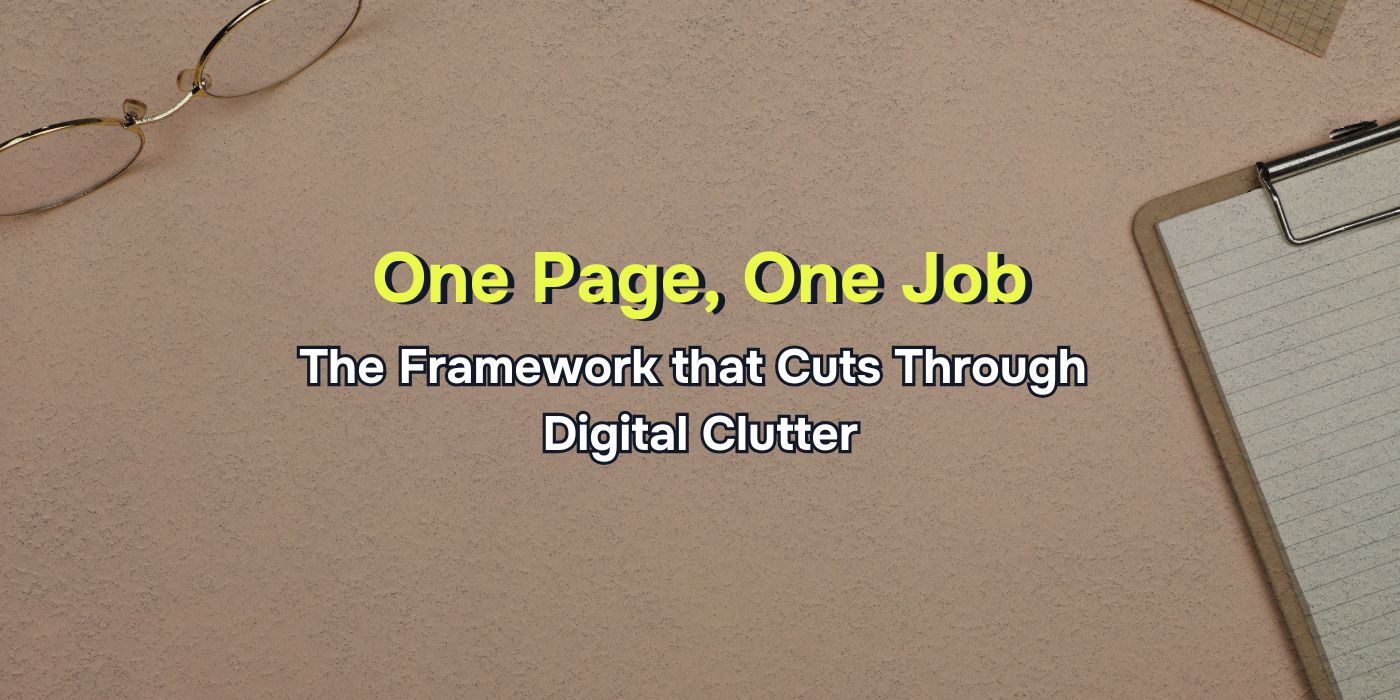Key Takeaways
- Google’s AI Mode prioritizes passages, not pages. Your content needs to answer specific questions clearly and concisely to be surfaced.
- Search results are now user-specific. Visibility depends on user context, not just keyword rank.
- Zero-click doesn’t mean zero value. Even if users don’t visit your site, your business can still be cited and trusted in AI responses.
- Classic SEO needs an upgrade.Success now depends on structuring content for machine understanding.
Google didn’t just update its algorithm. It flipped the table.
This new “AI Mode” isn’t some sparkly overlay on top of classic search. It’s a fundamental rework of how Google surfaces information — and it has big implications for how small and mid-sized businesses approach SEO, content, and marketing strategy.
Here’s what you need to know — minus the decks and jargon.
AI Mode Isn’t Traditional Search. It’s Reconstructed Reasoning.
Classic search is linear: crawl, index, rank, click. AI Mode breaks that model. Instead, it decomposes your query, predicts related questions you might ask next, fetches relevant passages across the web, and stitches everything together into an answer.
You’re no longer competing to rank for keywords — you’re competing for passage-level relevance in an AI-generated answer stream.
Let’s break it down:
1. It’s Not About Pages. It’s About Passages.
Google now looks at your content in fragments. If one paragraph on your site answers a sub-question clearly and concisely, that one paragraph could surface in a result — even if your page itself doesn’t “rank.”
So forget bloated intros and keyword stuffing. Think clear, specific insights. One paragraph, one job.
2. It’s Personalized at Scale
AI Mode adjusts search output based on user context — past behavior, device, location, and more. That means your content may show up for one user and not another, depending on their search patterns and history.
The old model said, “We’re #1 for this keyword.” The new model says, “We’re relevant for this user right now.” Very different game.
3. Your Content May Be Used, Not Clicked
Just because Google references your content doesn’t mean someone visits your site. If a passage from your blog helps answer a question, it might get cited inside the AI-generated response.
Zero-click doesn’t mean zero value. These citations still build trust, shape consumer perception, and keep you in the conversation — even if you don’t see a traffic spike.
4. SEO Isn’t Dead — But It’s Mutating
The foundations (crawlability, site health, metadata) still matter. But AI Mode adds another layer entirely. It’s driven by:
- Semantic understanding
- Query prediction
- Passage retrieval via vector search
- Generative reasoning
In other words: SEO needs to evolve from ranking pages to engineering relevance.
So… How Do You Actually Compete in AI Mode?
This is where most people panic. But here’s the playbook I use with clients:
1. Build for Passages
Write short, clear sections that directly answer real user questions. Break complex ideas into digestible, linkable statements.
2. Anticipate the Query Tree
Think beyond the primary keyword. What follow-up questions will AI Mode spin off from the original search? Map those and answer them before someone asks.
3. Use Multi-Format Content
AI Mode favors diversity — text, audio, video, visuals. Repurpose key insights into multiple formats so Google has options when building answers.
4. Track Mentions, Not Just Clicks
Start watching where and how your content is being referenced in AI results — not just in organic listings. Tools will catch up, but smart teams are already building dashboards to track visibility, not just traffic.
5. Simulate Real User Contexts
The same query looks different depending on who’s asking. Test your content as if you’re different personas: first-time visitor, returning customer, local buyer. This is the future of content QA.
Final Thoughts
This isn’t theoretical. It’s live. It’s rolling out now. And the businesses that understand how to structure content for machines — not just humans — will win faster, cheaper, and with less friction.
You don’t need to panic. But you do need to shift.
If you’re still measuring SEO like it’s 2015, you’re not just leaving opportunity on the table — you’re being actively outranked by companies that understand how AI Mode thinks.
Want Help Translating This Into Strategy?
I work with founders and marketing teams to build smart, search-ready content systems that work now — and in the world Google is building next.
Let’s talk about how to make your content matter in AI Mode.
Frequently Asked Questions
Does this mean SEO is dead?
No. It means SEO has evolved. Technical SEO and content hygiene still matter—but now you also need to structure content for passage retrieval and AI interpretation.
How do I know if my content is being used in AI Mode?
It’s still early, but look for featured snippets, “Mentioned in” citations, and start tracking branded mentions in AI-generated responses as tools improve.
Do I need to change my entire content strategy?
Not entirely. But you do need to shift toward more modular, question-driven, and multi-format content that can feed Google’s AI system.
Is this only relevant for big businesses?
Nope. In fact, smaller businesses that move quickly and create clear, useful content have a chance to outpace larger, slower competitors in this new model.






